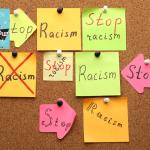
Religious Trauma Syndrome (RTS) is a term that describes the psychological and emotional scars left behind by harmful religious experiences. This concept, discussed by thought leaders in spiritual and emotional health, is often triggered by doctrines and practices that deeply wound individuals. In a yet-to-be-released conversation on the Heretic Happy Hour podcast, specialists like Mark Karris, Anna Clark Miller, and Danae Castile unpack the nuances of religious trauma, revealing its lasting effects and offering hope for recovery.
What is Religious Trauma?
Mark Karris, a licensed therapist and author of Diabolical Trinity: Healing Religious Trauma from a Wrathful God, explains that religious trauma results from repeated exposure to harmful religious environments, doctrines, and leaders. The scars run deep because of both the emotional abuse and the mental programming that often occurs in these spaces. Karris points out that trauma can take many forms. Some individuals endure what he calls “drip-by-drip” toxicity—daily exposure to doctrines about sin, hell, and damnation—while others experience “big earthquake” moments that shake their entire worldview.
One of the key features of religious trauma is its lasting impact on a person’s nervous system. Karris uses a powerful analogy, likening it to drinking poisoned water without realizing it, until the damage has already been done. This kind of trauma isn’t limited to overt abuse; sometimes it’s the subtle, constant pressure of religious guilt, fear, and shame that rewires a person’s brain and body, leaving them stuck in survival mode long after they’ve left the faith behind.
Emotional and Nervous System Responses
Anna Clark Miller, another expert in religious trauma and the author of The Religious Trauma Survivor Guide, adds that a key element of trauma is how it embeds itself in the nervous system. Emotions like fear and anxiety become ingrained in such a way that, even when someone has left the faith or no longer believes in certain doctrines (like hell or eternal punishment), their body still responds to these ideas with panic. Miller points out that for many people, even thinking about religious practices can trigger severe emotional reactions like flashbacks, nightmares, or uncontrollable fear. It’s not just intellectual; it’s physical and emotional, an experience that requires deep healing.
Danae Castile, a spiritual life coach, echoes this sentiment, sharing stories of clients who, even after deconstructing their faith and identifying as atheists or agnostics, continue to struggle with the deep-seated fear of hell. One client, for example, no longer believes in hell but still fears it and desires for it to exist to punish wrongdoers. This paradox reveals how deeply religious trauma embeds itself in our psychology, and how untangling it takes more than just a change of mind—it requires a reprogramming of the entire nervous system.
The Role of Doctrines in Religious Trauma
While many people think of religious trauma as resulting from specific leaders or institutions, Karris, Miller, and Castile emphasize that trauma often stems from the very doctrines and belief systems that people are taught to accept. Doctrines like hell, sin nature, and total depravity can be incredibly damaging, especially when internalized over a long period.
Karris particularly focuses on “hell trauma” in his work, noting how deeply ingrained the fear of eternal torment can be. For some, it feels like a phantom limb, where the body reacts to a belief they no longer hold, similar to how amputees sometimes feel pain in a limb that no longer exists. He adds that trauma is rooted in subcortical parts of the brain, meaning that our nervous system remembers and reacts to these doctrines even when our conscious mind has moved on. It’s why many deconstructing Christians still experience nightmares about being left behind in the rapture or burning in hell, even when they no longer believe in these doctrines.
Miller highlights the damaging effects of “sin nature” or “total depravity” doctrines. These beliefs teach that humans are fundamentally bad or evil and can only do good through God or a religious group. Such teachings foster self-hatred and self-distrust, encouraging individuals to look to external authorities rather than trusting their own instincts and intuition. This disconnection from self can have long-term effects, making it hard for people to trust themselves or navigate life after leaving their religious community.
Recovery and Self-Compassion
Despite the deep wounds religious trauma can leave, there is hope for healing. One of the most important steps in recovery, according to Karris and Miller, is developing self-compassion. Many people leaving toxic religious environments carry with them a sense of deep shame and guilt, feelings that are reinforced by years of being taught they are sinful or unworthy. Karris argues that self-compassion is the antidote to this shame. In his view, it’s a subversive act of defiance against the wrathful, judgmental God they’ve been taught to fear.
Miller emphasizes that part of healing involves re-learning how to trust oneself. Many people who leave religious systems are plagued by self-doubt because they’ve been conditioned to believe that their emotions and thoughts are inherently evil or misleading. Learning to listen to one’s body, emotions, and intuition again is a crucial step toward wholeness.
Castile takes this even further, encouraging individuals to embrace parts of themselves they were once taught to fear. Using Carl Jung’s idea of the “shadow self,” she describes how healing comes when we integrate all parts of ourselves, including the emotions and desires we were taught to suppress. Learning to make friends with these aspects of ourselves, rather than banishing them, is key to moving forward.
The Role of Community in Healing
Perhaps one of the most painful aspects of deconstruction and religious trauma is the loss of community. As Castile notes, when you leave the church, you’re often leaving the only support system you’ve ever known. This can make the process of healing feel even more isolating and terrifying. However, the experts on the Heretic Happy Hour emphasize that people don’t have to go through this process alone.
Miller, Karris, and Castile all facilitate groups and offer therapeutic resources for those recovering from religious trauma. Karris mentions the importance of finding professional help if trauma is severe, while Castile and Miller encourage people to seek out community—whether in person or online—where they can safely explore their deconstruction journey with others who understand.
In conclusion, religious trauma is a complex and deeply embedded issue, but healing is possible. Whether through therapy, community, or simply developing self-compassion, individuals can move from a place of fear and shame to one of peace and wholeness. And as more awareness grows around Religious Trauma Syndrome, more resources and support are becoming available for those who need it.
Also, if you’ve been digging my work on here, and want to see me be able to continue writing as close to full-time as humanly possible, please take a look at my Patreon page at www.patreon.com/mjdistefano. Even $1 a month helps bigly!


















